The Christmas cactus, scientifically known as Schlumbergera bridgesii, is a delightful and easy-to-care-for houseplant, celebrated for its vibrant blooms that appear during the winter months. Originating from the rainforests of Brazil, this plant, also known as holiday cactus, winter cactus, or crab cactus, has become a popular choice for adding a touch of color and festive cheer to homes during the holiday season.
Its popularity stems from its striking flowers and relatively simple care needs. With segmented, flat leaves and a graceful, cascading growth pattern, the Christmas cactus is visually appealing and can thrive for decades, becoming a cherished part of holiday traditions passed down through generations. Some Christmas cacti can even live for up to 100 years. Breeders have developed numerous hybrids and cultivars, offering a spectrum of flower colors including pink, red, white, yellow, and purple, ensuring there’s a Christmas cactus to suit every taste.
Named after Frédéric Schlumberger, a 19th-century French cactus and succulent collector, the Christmas cactus is one of three main types of holiday cacti, alongside the Thanksgiving cactus and Easter cactus. Each type boasts unique characteristics and bloom times. The Christmas cactus is particularly beloved as a winter houseplant, bringing a festive ambiance to any indoor space.
Its ease of care and indoor adaptability make it a favorite among plant enthusiasts. By understanding its basic needs and providing the right conditions, you can enjoy the beauty of this captivating succulent year after year.
Getting Your Christmas Cactus to Bloom: Essential Tips
Christmas cactus flowers are truly spectacular. Their unique, tubular blossoms come in a range of vibrant hues, from classic pink and red to elegant white, sunny yellow, and rich purple. The petals are long and gracefully curved, giving the flowers an elegant and refined appearance. Typically blooming in the winter, these flowers bring a welcome burst of color when it’s needed most.
Under ideal conditions, Christmas cacti will typically bloom around 12 weeks after planting and can continue to flower for 4-6 weeks, offering a long-lasting display of beauty in your home or garden.
Why True Christmas Cacti Can Be Rare
During the holiday season, many plants marketed as Christmas cacti are actually Thanksgiving cacti or hybrids. Growers often manipulate blooming cycles to coincide with Christmas, leading to mislabeling. True Christmas cacti (Schlumbergera bridgesii) are distinct from Thanksgiving cacti (Schlumbergera truncata), although both are often sold as “holiday cacti.” Understanding the difference helps ensure you are getting the plant you desire.
Blooming Indoors: Creating the Right Environment
To encourage your Christmas cactus to bloom indoors, several key factors are crucial:
- Light: Provide bright, indirect light. Avoid direct sunlight, which can scorch the leaves. A north or east-facing window is usually ideal.
- Darkness: During the fall, ensure your cactus receives 12-14 hours of uninterrupted darkness each night. This mimics natural light cycles that trigger blooming.
- Watering: Keep the soil slightly moist but not waterlogged. Avoid overwatering. Water when the top inch of soil feels dry.
Blooming Outdoors: Considerations for Different Climates
If you’re growing your Christmas cactus outdoors, consider these points:
- Light and Shade: Place it in a location with bright, indirect light but also some shade during the hottest part of the day to prevent sunburn.
- Temperature: Outdoor Christmas cacti benefit from a 6-8 week period of cooler temperatures (around 50-55°F or 10-13°C) in the fall to stimulate bud formation.
- Frost Protection: Protect your cactus from frost. Bring it indoors if temperatures are expected to drop too low.
- Light and Temperature Sensitivity: Christmas cacti bloom in response to shorter days and cooler temperatures. These changes signal the plant to produce flower buds.
Whether indoors or outdoors, proper care is essential. Use well-draining soil and a cactus-specific potting mix. Fertilize during the growing season but avoid fertilizing during the blooming period. Patience is key, as it takes time for the plant to respond to these cues and produce flowers.
With these tips and minimal effort, you can increase your chances of enjoying beautiful blooms from your Christmas cactus, wherever you choose to grow it.
Step-by-Step Guide to Christmas Cactus Care
Christmas cacti are remarkably easy to care for. As epiphytic plants in their native rainforests, they naturally grow on trees, absorbing moisture from the air. They adapt well to indoor environments with minimal intervention. Here’s a step-by-step guide to ensure your Christmas cactus thrives:
Quick Care Overview
| Feature | Details |
|---|---|
| Bloom Season | Fall, Winter |
| Flower Color | Pink, Red, White, Purple, Orange |
| Growth Rate | Slow |
| Hardiness Zone | 10, 11, 12 (USDA) |
| Mature Size | 12 in. Tall – 24 in. Wide |
| Plant Type | Perennial cactus |
| Sun Exposure | Full sun– Partial shade (indirect preferred) |
| Toxicity | Safe for Humans, Dogs, Cats |
| Watering Needs | Moderate |
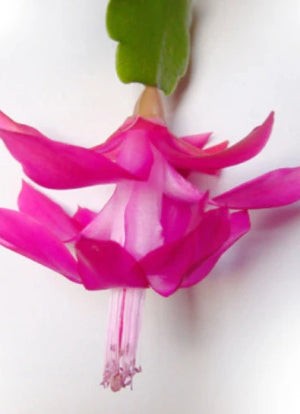
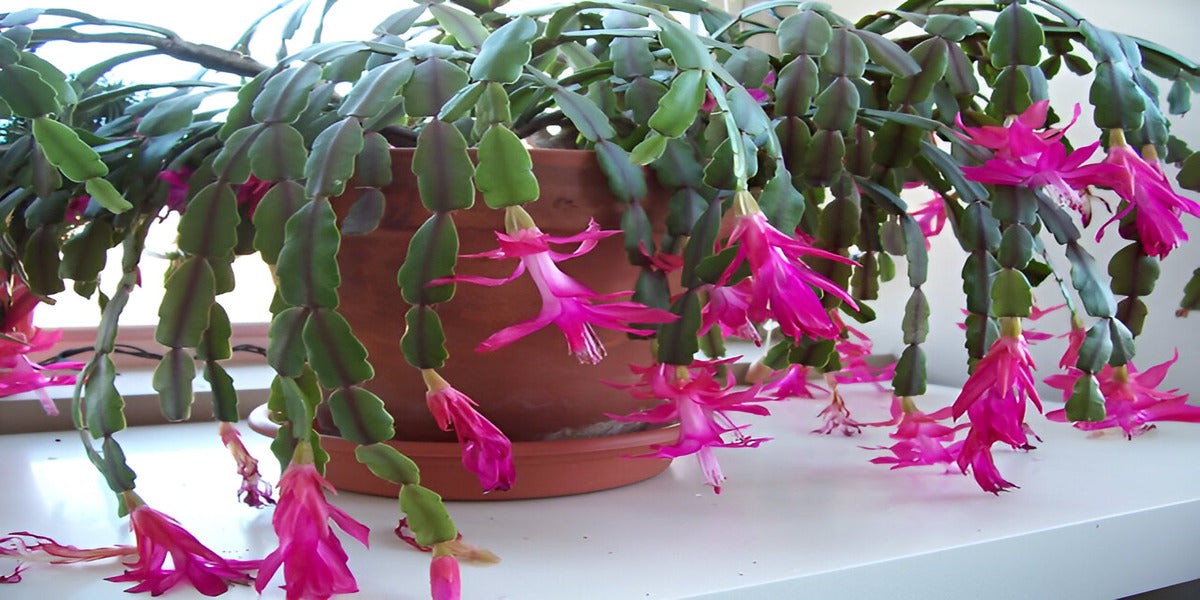
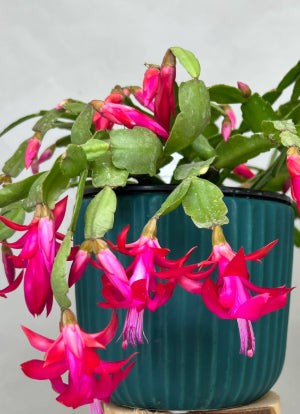
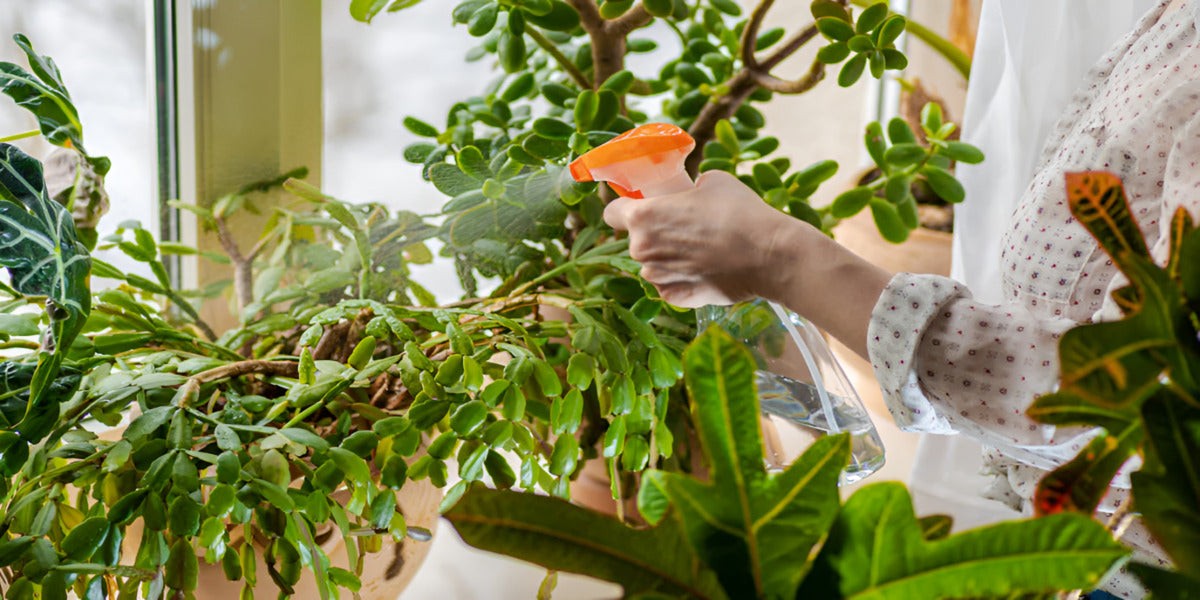
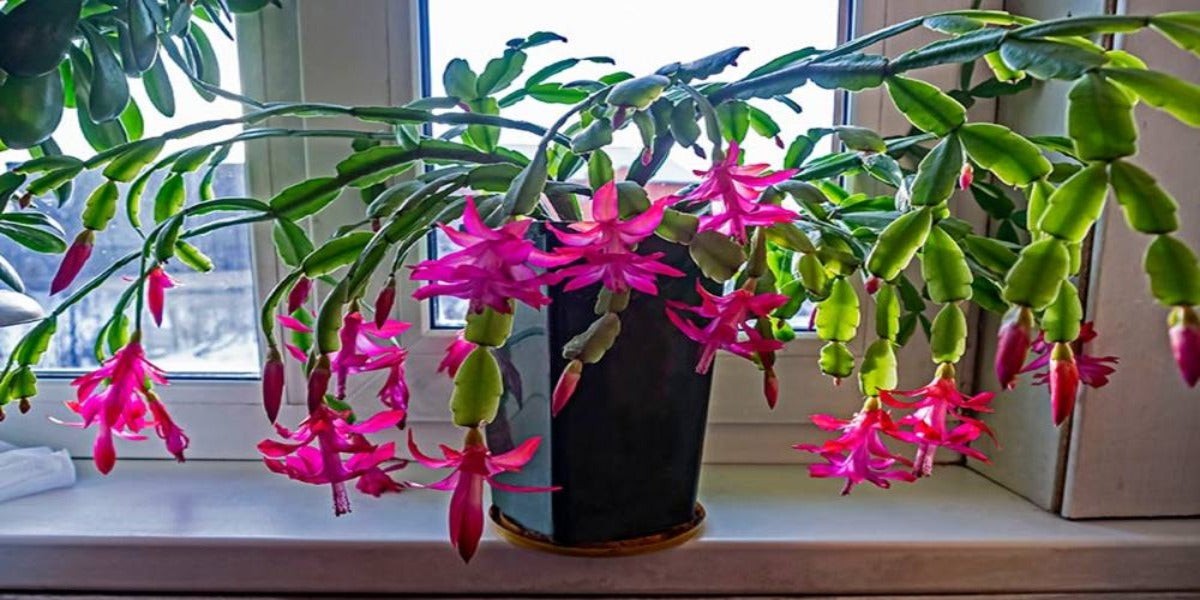
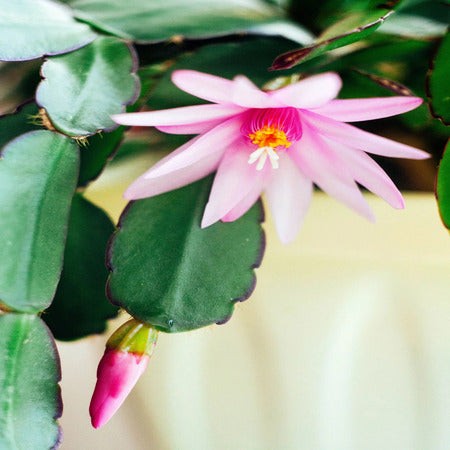

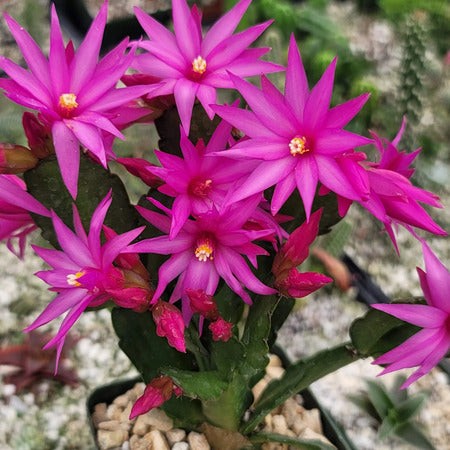
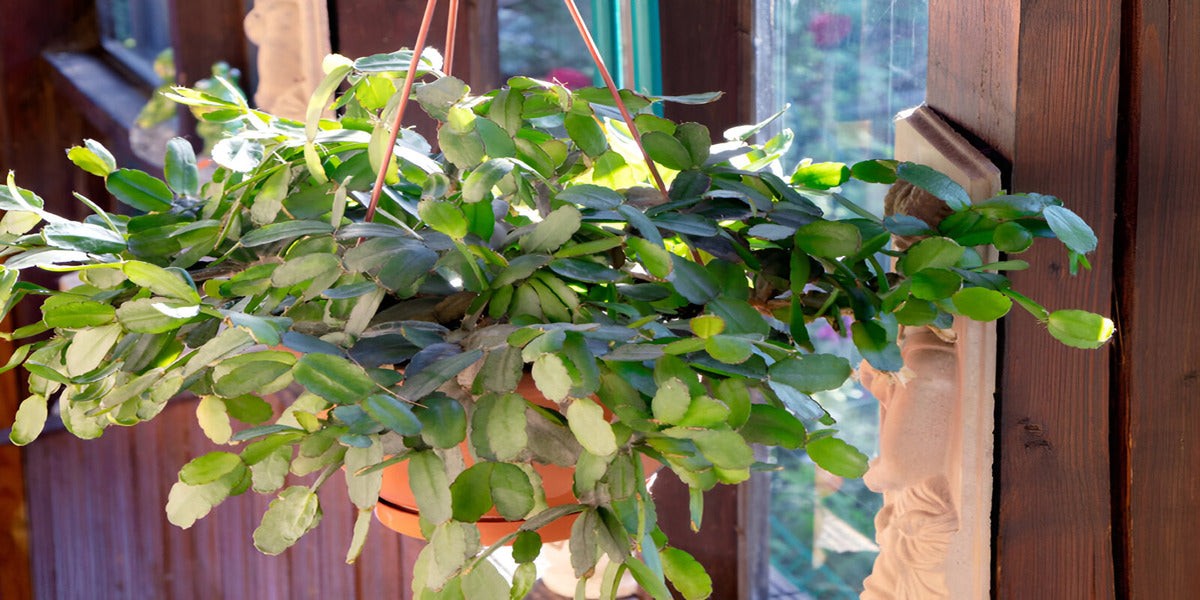
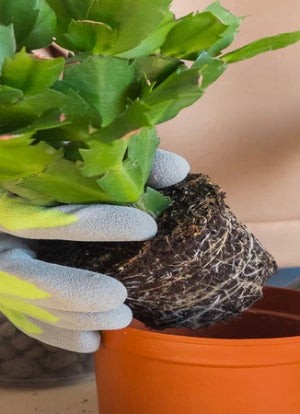
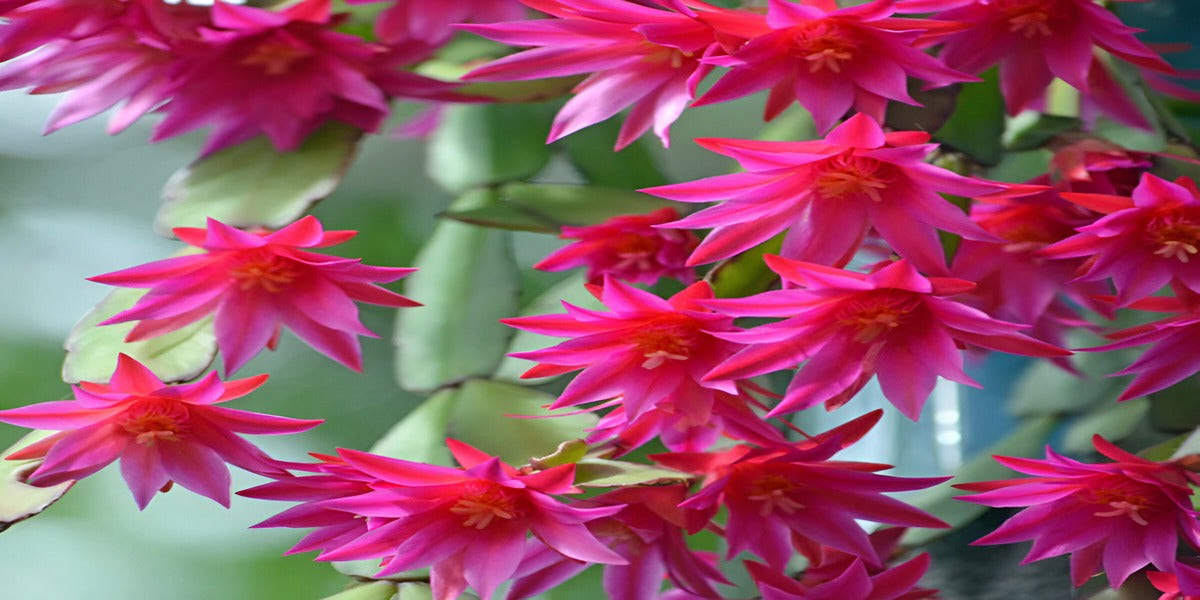
Watering Your Christmas Cactus: Tips and Tricks
Water sparingly, allowing the soil to slightly dry out between waterings. A general guideline is to water every 7-10 days in spring and summer and every 4-6 weeks in fall and winter. While more water-tolerant than desert cacti, Christmas cacti still dislike sitting in water. Water when the top inch of soil feels dry. Use room temperature water and saturate the soil thoroughly, ensuring excess water drains away. Overwatering can lead to root rot.
During spring and summer (the growing season), more frequent watering may be needed. Monitor soil moisture and adjust accordingly. Reduce watering in early fall and mid-October to mimic drier native conditions and encourage blooming during the holiday season.
Humidity: A Christmas Cactus’s Friend
Christmas cacti thrive in higher humidity. Increase humidity by placing a tray of water and pebbles beneath the pot. As water evaporates, it creates a humid microclimate. Misting leaves occasionally can also boost moisture, but avoid over-misting to prevent fungal issues.
Light Requirements: Bright, Indirect Sunlight
Christmas cacti prefer bright, indirect light, similar to their rainforest canopy habitat. A spot near a window with filtered sunlight is ideal. Direct sunlight can be too intense, causing leaf burn.
Aim for 4-6 hours of bright, indirect light daily during the growing season (spring and summer). Longer daylight hours promote healthy growth and blooming. In fall and winter, shorter daylight hours are beneficial. For blooming, ensure about 12-14 hours of darkness nightly during the fall.
Christmas cacti are adaptable to lower light but may grow slower and bloom less. Conversely, too much direct light can cause leaf damage. Balance is key to a thriving and flowering Christmas cactus.
The Three Types of Holiday Cacti
Holiday cacti are often confused, especially in garden centers. Thanksgiving, Christmas, and Easter cacti belong to the Schlumbergera genus (except Easter cactus, sometimes Rhipsalidopsis or Hatiora) and all produce zygomorphic flowers around holiday seasons.
Christmas cacti thrive indoors in shaded or bright spots and can be grown indoors year-round until summer. With proper care, they can grow quickly, reaching a two-foot spread within a few years, blooming each winter. All types can be kept indoors until summer, allowing for easy relocation if needed. Here are the key differences:
1. Christmas Cactus (Schlumbergera bridgesii)
BUY AT PLANET DESERT
Key Points:
- USDA Hardiness Zones: 10, 11, 12
- Bloom Time: December – February
- Growth Habit: Smooth, scalloped flat stem segments
- Color Varieties: Pink, red, orange, white, purple, yellow
Many “Christmas cacti” sold during the holiday season are Thanksgiving cactus hybrids forced to bloom for Christmas. True Christmas cacti have flattened stems with rounded edges. They bloom around December, with vibrant pink, red, or white flowers. They are popular holiday decorations due to their stunning blooms and easy care.
2. Thanksgiving Cactus (Schlumbergera truncata)
BUY AT PLANET DESERT
Key Points:
- USDA Hardiness Zones: 10, 11, 12
- Blooming Period: Mid-November – New Year
- Shape: Pointed, claw-like stem segments
- Color Varieties: Pink, red, orange, white
Thanksgiving cacti are most often mislabeled as “Christmas cacti.” Growers manipulate their bloom cycle for Thanksgiving and Christmas sales. They have pointed, claw-like stem segments and bloom in late November, with pink, red, purple, or white flowers. They thrive indoors, making them popular holiday decorations.
3. Easter Cactus (Rhipsalidopsis gaertneri or Hatiora gaertneri)
BUY AT PLANET DESERT
Key Points:
- USDA Hardiness Zones: 10, 11
- Blooming Period: March – May
- Shape: Rounded, scalloped stem segments
- Color Varieties: Pink, red, purple, orange, white
Easter cacti, or Spring cacti, have rounded, scalloped stem segments. They bloom in spring around Easter, with dainty pink, red, or white flowers. Like Thanksgiving cacti, Easter cacti adapt well indoors, making them lovely holiday additions.
Choosing the Right Soil for Your Holiday Cactus
Selecting the right soil is crucial for Christmas cactus health. Proper moisture balance is vital to prevent root and stem rot. Planet Desert’s specialized cactus potting mix with mycorrhizae promotes healthy root systems. Alternatively, you can DIY a mix with equal parts perlite, coarse sand, and good quality potting soil.
Avoid heavy garden soil or mixes that retain too much moisture. Christmas cacti tolerate slightly acidic to slightly alkaline soil (pH 5.5 to 7.0). Well-draining soil is key, ensuring good aeration and preventing waterlogging.
Fertilizing Your Christmas Cactus: When and How
Fertilizing provides essential nutrients for healthy growth and vibrant blooms. Use a balanced, water-soluble fertilizer formulated for Christmas cacti, ideally with an NPK ratio around 5-10-5.
Fertilize annually during the spring growing season, not monthly. Dilute fertilizer as per package instructions and apply to the soil base. Avoid over-fertilizing to prevent salt build-up and root damage. Under-fertilizing is better than over-fertilizing.
Withhold fertilizer during winter dormancy to mimic the plant’s natural cycle and prepare it for blooming. Focus on providing cool temperatures and reduced watering to encourage bud formation during this time.
Organic alternatives like diluted compost tea or worm castings can also be used to provide natural nutrients, improving soil fertility and plant health without synthetic chemicals.
Hardiness Zone and Temperature Considerations
Indoors, Christmas cacti thrive in cozy, humid environments with indirect light. Ideal temperatures are between 60°F and 70°F (15-21°C) during the day, with slightly cooler nighttime temperatures. This range mimics their tropical habitat.
In USDA zones 10-12, Christmas cacti can be grown outdoors due to mild winters. In colder regions, grow them indoors or in containers that can be moved indoors during winter.
Christmas cacti adapt to average indoor humidity but appreciate higher humidity. Increase humidity by misting leaves or using a pebble tray. Maintaining proper temperature and humidity is key for their success as popular indoor plants.
Quick Annual Care Schedule
Spring
- Fertilize with a balanced houseplant fertilizer after flowering to boost new growth.
- Repot if necessary into a slightly larger container with fresh, well-draining soil.
Summer
- Move outdoors to a shaded area, protecting from direct sunlight.
- Water regularly, keeping soil consistently moist but not soggy, ensuring good drainage.
Fall
- Reduce watering and move to a cooler room (50-55°F or 10-13°C) to encourage bud formation.
- Protect from direct sun and cold drafts.
Winter
- Place in a well-lit location with indirect light.
- Water sparingly, allowing the top inch of soil to dry between waterings.
Enjoy the beautiful winter blooms! Remember to observe your plant’s specific needs and adjust care accordingly.
Pruning Your Christmas Cactus
Prune after the blooming period, typically in late winter or early spring. Remove dead, damaged, or overgrown stems using clean, sharp shears. Selective pruning helps maintain a compact shape and encourages new growth.
Shape the plant by trimming uneven or leggy stems to encourage branching and a balanced growth pattern. Pinching off stem tips can also promote bushier growth. Avoid over-pruning to prevent stress. Pruning is based on personal preference for shape and size.
Propagating Your Christmas Cactus
Spring or early summer is the best time to propagate Christmas cacti when the plant is in its active growth phase. Avoid propagating during the blooming period.
Propagating by Stem Cuttings:
- Select a healthy stem segment, 3-4 segments long.
- Allow the cutting to callus for a few days to prevent rotting.
- Prepare well-draining soil mix (potting soil and perlite/sand).
- Place cuttings in lightly moistened soil: three stems in a 4-inch pot, five in a 6-inch pot.
- Keep soil lightly moist, avoid overwatering.
- Place in a warm, bright location, avoiding direct sunlight.
- Roots should develop in 2-3 weeks, new growth will follow.
Alternatively, root stems in water before planting in soil. Submerge the cut end in 1-2 inches of filtered water in a jar in indirect light. Plant in potting soil when roots are 1-2 inches long.
Propagating by Seeds:
- Collect ripe seeds from the fruit.
- Clean seeds, remove pulp, and dry for a few days.
- Prepare well-draining soil mix.
- Plant seeds in small pots or trays, lightly cover with soil.
- Keep soil consistently moist by misting.
- Place in a warm, bright location, avoiding direct sunlight.
- Germination may take weeks or months. Transplant seedlings into individual pots once grown.
Repotting Your Christmas Cactus
Repot Christmas cacti every 2-3 years, or when the pot becomes too small. They prefer to be slightly root-bound. Repotting is best done after blooming or in spring.
Choose a slightly larger pot and use well-draining soil. Water thoroughly after repotting and allow the plant to adjust before resuming regular care. Keep in bright, indirect light and avoid overwatering.
Overwintering Your Christmas Cactus
Overwintering is crucial, especially in cold climates. Provide a rest period during winter with cooler temperatures around 50-60°F (10-15°C). Reduce watering, water only when soil is dry. This simulates natural conditions and prepares the cactus for the next blooming season.
Common Pests and Diseases
Pests include mealybugs, spider mites, flower thrips, and fungus gnats.
- Mealybugs: White, cottony pests. Treat with insecticidal soap or rubbing alcohol.
- Spider mites: Tiny red/brown pests causing discoloration. Use miticide or wash leaves.
- Flower thrips: Damage flowers and leaves. Use insecticidal soap or neem oil.
- Fungus gnats: Small flies in soil. Let soil dry between waterings, use sticky traps.
Overwatering can lead to fungal diseases like Fusarium and Phytophthora stem rot. Avoid overwatering to prevent fungal issues.
- Fusarium stem rot: Brown patches near the soil line. Treat with fungicide if detected early.
- Phytophthora stem rot: Moist, water-soaked stem at soil level. Often lethal.
Avoiding Common Problems
- Root Rot: Use well-draining cactus soil, avoid overwatering, allow soil to dry between waterings.
- Distorted Growth: Provide bright, indirect light. Too much direct sunlight or too little light can cause issues.
- Red or Pink Leaves: Can be natural or stress response to light/temperature changes. Maintain consistent conditions.
- Yellowing/Wilting Leaves: Often due to overwatering. Let top inch of soil dry before watering. Ensure proper pot drainage.
Where to Buy a Christmas Cactus
Christmas cacti are available at local nurseries and garden centers. Planet Desert offers a wide selection of cacti online with guaranteed healthy delivery. Search online for “Christmas cactus near me” or visit Planet Desert.
Grower’s Reference Guide
| Common Name | Holiday Cactus, Winter Plant, Crab Cactus |
|---|---|
| Botanical Name | Schlumbergera bridgesii |
| Family | Cactaceae |
| Blooming Season | Fall, Winter |
| Flower Color | Pink, red, white, purple, orange |
| Genus | Schlumbergera |
| Growth Habit | Trailing—hanging |
| Growth Rate | Slow |
| Hardiness Zone | 10—11–12 |
| Mature Size | 12 in. tall, 24 in. wide |
| Native Area | Brazil |
| Plant Type | Perennial cactus |
| Propagation | By stem cuttings |
| Resistance | Drought tolerant, Pest resistant, Heat tolerant |
| Soil PH | 6.5, Acidic, Neutral |
| Soil Type | Cactus Soil Mix |
| Special Features | Showy Blooms |
| Sun Exposure | Full sun, partial shade (indirect preferred) |
| Toxicity | Safe for Humans, Dogs, Cats |
| Watering Needs | Moderate |
| Dormancy | Winter |
The Bottom Line
Christmas cacti are beautiful plants that bring festive color. They need specific care for optimal thriving, including light, water, temperature, and fertilizer. Providing a period of darkness encourages timely blooming. Whether you have a Christmas or Thanksgiving cactus, they are delightful additions to your home.
Frequently Asked Questions
How to Care for Christmas Cactus?
Easy care: bright, indirect light, 60-70°F (15-21°C) temperatures. Water when top 2 inches of soil dry. Fertilize once a year in spring after flowering. Cool period (50-55°F or 10-13°C) for 6-8 weeks in fall encourages blooming. Prune leggy stems after flowering.
When should you put a Christmas cactus in the Dark?
6-8 weeks in fall, for 12-14 hours of darkness daily. Cool temperatures (50-55°F or 10-13°C) during this period promote bud formation and blooming.
Do Christmas cactus always bloom?
Yes, with proper care, they can bloom during the holiday season and potentially again in spring with shorter days.
What is the secret of a Christmas cactus bloom?
Cool period (6-8 weeks, 50-55°F or 10-13°C) in fall, bright indirect light, and slightly moist soil are key to blooming.
Do Christmas cacti grow fast?
Moderate growth rate, spreading about 2 feet over time with proper care.
My Christmas Cactus is not blooming. What do I Do?
Ensure indirect light, proper watering (slightly moist, not overwatered), and a cool temperature period (50-55°F or 10-13°C) in fall.
How to prune a Christmas Cactus?
Pinch or snip overgrown stems after blooming to maintain shape. Remove dead or damaged parts.
Why Are the Leaves on My Schlumbergera bridgesii Limp?
Possible causes: underwatering/dehydration, extreme temperatures, or drafts.
Why are the tips of the outer leaves of Christmas cactus red?
Environmental stress, direct sunlight exposure, nutrient deficiencies (phosphorus, magnesium), temperature stress, or inconsistent watering. Can also be natural seasonal change.